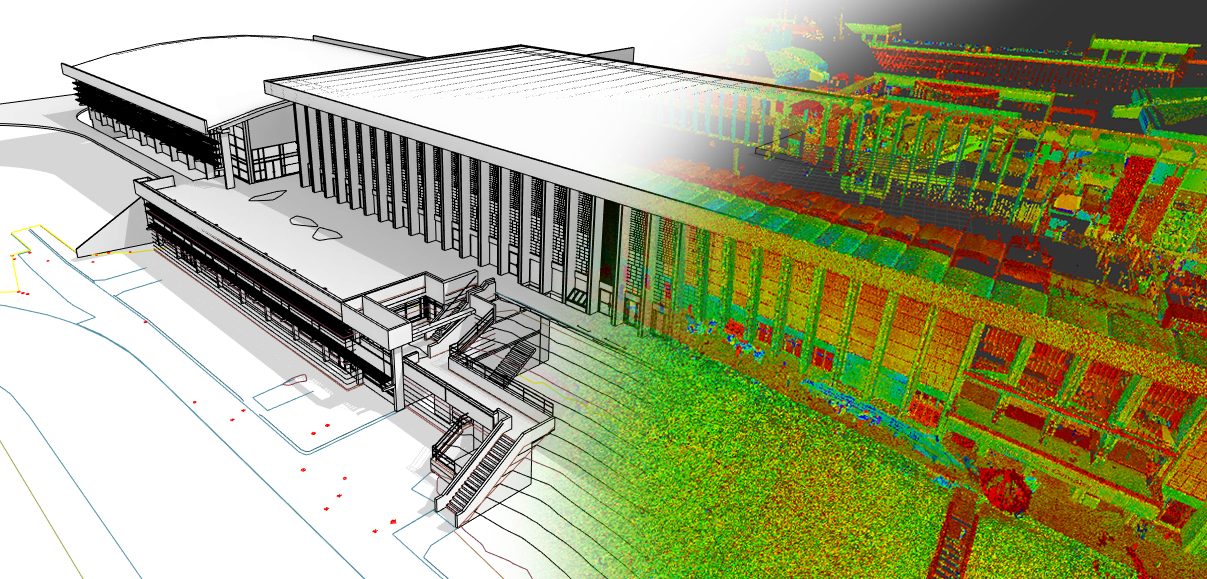By Steve Rombough, DiplT, Division Manager
The long relationship of Survey and GIS is a storybook romance. They were best friends in grade school, hung out all time in high school, and – even though they denied anything was “going on” – everybody knew they would make a great couple. On the surface, they may have looked incompatible, with Survey being a little rough around the edges, and GIS being quiet and unassuming. Yet, there was an undeniable connection between the two. Their bond grew stronger over time and now they are almost inseparable, which means only one thing; it is time to produce offspring.
Say “hello” to the Digital Twin.
Meet the family
Survey is an old soul and is known for being a rugged, outdoorsy type who traverses the world’s landscapes with the latest technology in hand. While this reputation is under no threat in BC since most of this province is still an untamed wilderness, there is an emerging transformation occurring in our urban environments. Even rugged Survey is affected by this technological disruption and has had to develop new tools to tackle this changing frontier. The most impactful of these tools is the laser scanner which has turned the traditional workflow on its head and is moving Survey to a desk job, albeit somewhat reluctantly. With laser scanners, fieldwork has become an exercise in reality capture where, in certain situations, a simple press of a button can accomplish more in 30 seconds than a conventional field crew could accomplish in a day. As a result, Survey is learning to transfer its methodologies and field skills to new software platforms and production workflows. This is a significant departure from its historical roots, as the plan drawings that have come to define Survey is evolving into 3D models which provide the DNA of the Digital Twin.
GIS cannot boast the same historical lineage, and this may be what puts it in a better position to adapt to this new world. Its process is one of maturation as opposed to transformation. There is a feeling GIS has known how this was going to unfold ever since showing up on the scene back on the high school bleachers. Exuding a quiet confidence, GIS has remained committed to its roots and waited for the rest of the world to finally realize everything it has to offer! Modesty won’t allow it to say, “I told you so.” Instead GIS will simply accept these evolving datasets with a smile and make them accessible to all who need them – consistent with what it has been doing since the outset.
Survey provides the building blocks and GIS prepares them for the outside world. Together, they will raise their Digital Twin to lead the Smart City revolution.
What is the Digital Twin?
The Digital Twin is a representation of the physical world and built environment that we all experience on a daily basis. In its most complex form, it is a dynamic entity that is constantly being shaped by the changes occurring every second in the world around us. This is accomplished through a combination of emerging technologies such as the Internet of Things (IoT), artificial intelligence (AI), and machine learning, to name only a few. The Digital Twin is the foundation of the Smart City which many urban centres, with support from various levels of government, are racing to establish in response to current and forecasted demands on infrastructure. Moreover, the Smart City is intended to solidify a sense of community with citizen engagement via mobile devices and this will shape our very experience of democracy. Now that may be a bold statement, but make no mistake about it, this is a revolution.
The future?
Like any love child, there will come a time when the Digital Twin will question if it still needs its parents. Will Survey and GIS still be necessary once every asset has been collected and incorporated into the working model? Will IoT sensors be able to capture sufficient and accurate data to update the working model as change occurs? Will AI and machine learning be able to respond to the needs of government and the public? Will robots take over the world?? These sorts of existential questions are critical to the child’s development but, as most of us can attest, parents will always have a role to play, even if that role changes over the course of a lifetime.
